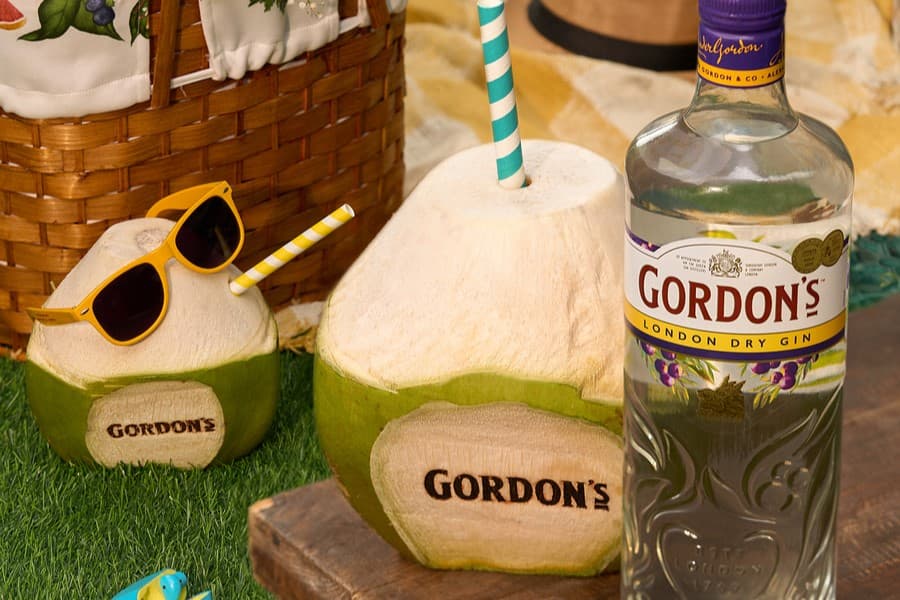Coconut Cream Vs. Coconut Milk: Understanding The Difference For Culinary And Cocktail Applications
When coconut milk is left to sit or is removed directly by cooking coconut flesh with less water, the thick, creamy, and smooth portion known as coconut cream rises to the top. It adds an opulent body to curries, desserts, and drinks and is smooth, rich, and renowned for its velvety texture. It's ideal for recipes requiring a layered taste because of its buttery texture and rich coconut aroma. Although coconut cream isn't used by itself, it enhances the richness of both sweet and savoury foods and drinks.
Grated coconut flesh is combined with water and strained to create coconut milk, a smooth, milky-white liquid. Richer than dairy milk but lighter than coconut cream, it has a well-balanced texture. It also has a mild coconut flavour. Coconut milk, which offers a subtle smoothness without masking tastes, is frequently used in soups, sauces, and tropical drinks. When recipes call for full-bodied texture without the thickness that coconut cream provides, it's the preferred option. Get to know about the contrast between using both in drinks and dishes.
Understanding The Difference Coconut Cream And Coconut Milk For Culinary And Cocktail Applications
1. Difference In Texture
In terms of texture, coconut milk and coconut cream are very different. Thick and smooth coconut cream adheres to the glass and produces an opulent texture. Because of this, it's the ideal complement to dessert-style, creamy cocktails. For a smooth, velvety finish, try shaking 15 ml of white rum with coconut cream, pineapple juice, and ice in a tropical coconut cocktail. Coconut cream works well in the kitchen to thicken rich gravies and desserts like coconut fudge. Coconut milk mixes well with other ingredients to create colourful, frothy cocktails. Coconut milk gives mild Thai curries or broth-based soups a smooth texture without making them thick.

2. Taste
Every taste of coconut cream delivers full-bodied coconut sweetness since it is robust, rich, and concentrated. Try making a coconut mocha cocktail, for example, by combining 15 ml of coconut liqueur with coconut cream, espresso, and ice. The richness of the coconut balances the bitterness of the coffee. Rich caramel sauces and foods like coconut flan are made with coconut cream. In contrast, coconut milk is more subdued, softer, and gentler. Its lightness provides a crisp coconut aroma in the background while letting other flavours take centre stage.
3. Fat Contents
Coconut cream and coconut milk have very different fat contents, which are hidden, giving the taste of their texture. This fat transforms cocktails into a silky, dessert-like texture. Coconut cream adds richness to sauces, such as butter chicken gravy, in cooking. Conversely, coconut milk is significantly lighter due to its decreased fat level. It's ideal for beverages that require a full-bodied texture. Try the coconut citrus cooler for example, which is made by shaking 15 ml of light rum, 5 ml of coconut milk, 2 ml of lemon juice, and 30 ml of soda.

4. Sweetness
One of the key considerations when deciding between coconut milk and coconut cream for beverages is sweetness. Coconut cream is rich, almost dessert-like, and sweet. A cocktail can benefit from its sweetness. Thus, additional sweets or syrups are not necessary. Try a coconut cold brew sipper, which is a sweet beverage with rich coffee overtones counterbalanced by the mellow sweetness of coconut. It is made by blending 15 ml of vanilla rum, 10 ml of coconut cream, and 10 ml of cold brew coffee. In contrast, coconut milk is much more neutral. It has a faint coconut taste and it's not very sweet. In summary, coconut milk maintains a subtle and adaptable flavour, while coconut cream adds sweetness.
5. Blending Techniques
Coconut milk and coconut cream must be blended using entirely separate methods. Due to its density, coconut cream can separate if not handled properly. To fully incorporate into a drink, it must be shaken vigorously or folded gently. For instance, to achieve a smooth finish, vigorously shake 15 ml of white rum, 10 ml of coconut cream, 10 ml of passion fruit juice, and broken ice in a passion fruit coconut cocktail. Stirring won't make the cream foamy; aeration is necessary. To prevent curdling, coconut cream should be properly folded into desserts or whipped creams.
 On the other hand, coconut milk is quite flexible. It combines cleanly and rapidly, which makes it a preferred choice for light, sparkling cocktails. It blends in almost rapidly when added to hot broths or curries, making it ideal for cooking.
On the other hand, coconut milk is quite flexible. It combines cleanly and rapidly, which makes it a preferred choice for light, sparkling cocktails. It blends in almost rapidly when added to hot broths or curries, making it ideal for cooking.
For rich culinary preparations and dessert-style drinks, coconut cream is the preferred ingredient. Conversely, coconut milk works well in lighter drinks that require a hint of tropical flavour. Both have advantages, but the method to achieving the classic texture and flavour is knowing which to use.
Drink Responsibly. This communication is for audiences above the age of 25.




